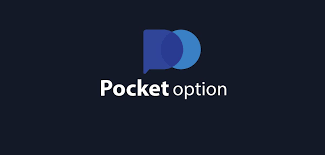
Understanding Fees Pocket Option
When embarking on the exciting journey of online trading, one of the most critical aspects to consider is the Fees Pocket Option fees Pocket Option. Understanding these fees can significantly affect your trading experience and potential profits. In this article, we will delve deep into the various fees associated with Pocket Option, discussing what traders can expect, how these fees are structured, and tips for managing costs effectively.
1. Overview of Pocket Option
Pocket Option is a popular online trading platform that provides access to a wide range of financial markets. Known for its user-friendly interface and high payout rates, it allows traders to engage in digital options trading with ease. However, like any trading platform, Pocket Option comes with its own set of fees that can impact profitability.
2. Types of Fees Associated with Pocket Option
Understanding the different types of fees is essential for any trader. Here are the primary fees you may encounter while using Pocket Option:
2.1. Trading Fees
Unlike traditional stock trading, trading fees on Pocket Option are generally low. The platform offers various asset classes, each with its own pay structure. Typically, traders do not incur additional costs when executing trades; however, it’s crucial to understand that the difference between the buying and selling price (spread) can affect your profitability.
2.2. Withdrawal Fees
When it comes to withdrawing your funds, Pocket Option has a transparent fee structure. The platform allows several withdrawal methods, including bank transfers, e-wallets, and cryptocurrencies. Depending on the chosen method, withdrawals might incur different fees. For example, withdrawing funds via a bank transfer may attract higher fees compared to using an e-wallet.
2.3. Inactivity Fees
Pocket Option charges an inactivity fee for accounts that remain dormant for a specific period. This fee aims to encourage active trading on the platform. If you plan on taking a break from trading, make sure to be aware of this fee and check the duration specified by Pocket Option.

2.4. Deposit Fees
Generally, Pocket Option does not charge deposit fees, making it easier for traders to fund their accounts. However, be mindful that your payment provider might apply its own fees depending on the method of deposit you choose. Always confirm with your payment service to avoid unexpected costs.
3. How Fees Impact Trading Experience
Awareness of the fees can significantly influence trading strategies. Higher trading and withdrawal fees can eat into your profits, so it’s essential to factor these costs into your overall trading plan. For example, if you frequently withdraw small amounts, opting for withdrawal methods with lower fees may be beneficial in the long run.
4. Tips for Minimizing Fees
Here are some strategies to help you manage and minimize your fees while using Pocket Option:
4.1. Choose the Right Withdrawal Method
Since withdrawal fees can vary based on the chosen method, it’s wise to select those with lower costs. E-wallets, for instance, often feature lower fees compared to traditional bank transfers.
4.2. Stay Active
Regular trading can help you avoid inactivity fees. Make sure to log into your account and trade periodically, even if it’s a small amount, to keep your account active.
4.3. Utilize Promotions and Bonuses
Pocket Option frequently offers promotions and bonuses that can help offset some trading costs. Keep an eye on these opportunities and leverage them to improve your overall profitability.
5. Conclusion
Understanding and managing fees is crucial for online traders using Pocket Option. By knowing the types of fees involved and implementing strategies to minimize them, you can enhance your trading experience and overall profitability. Stay informed about the fee structure and keep abreast of changes to ensure that your trading journey is both enjoyable and rewarding.


